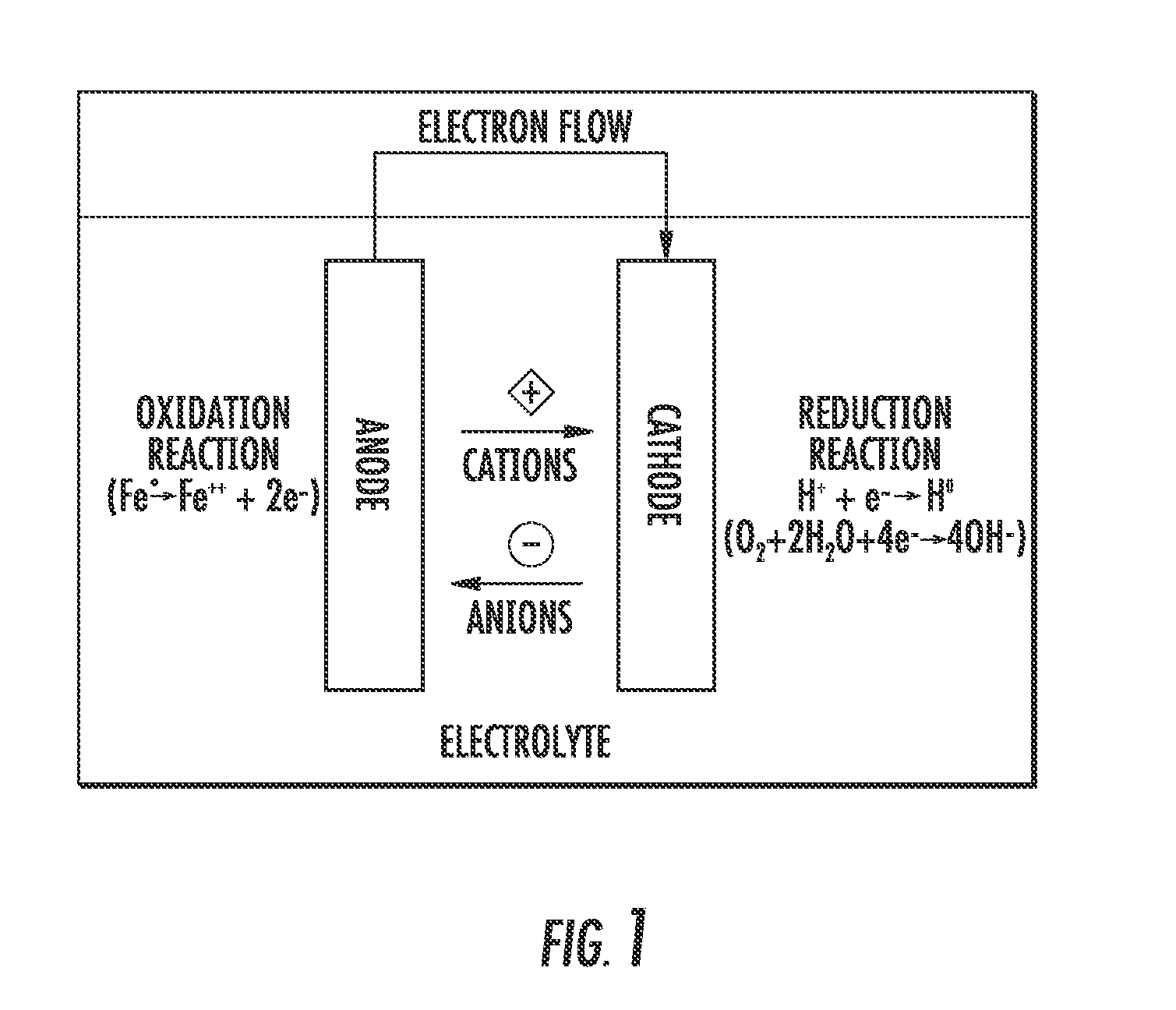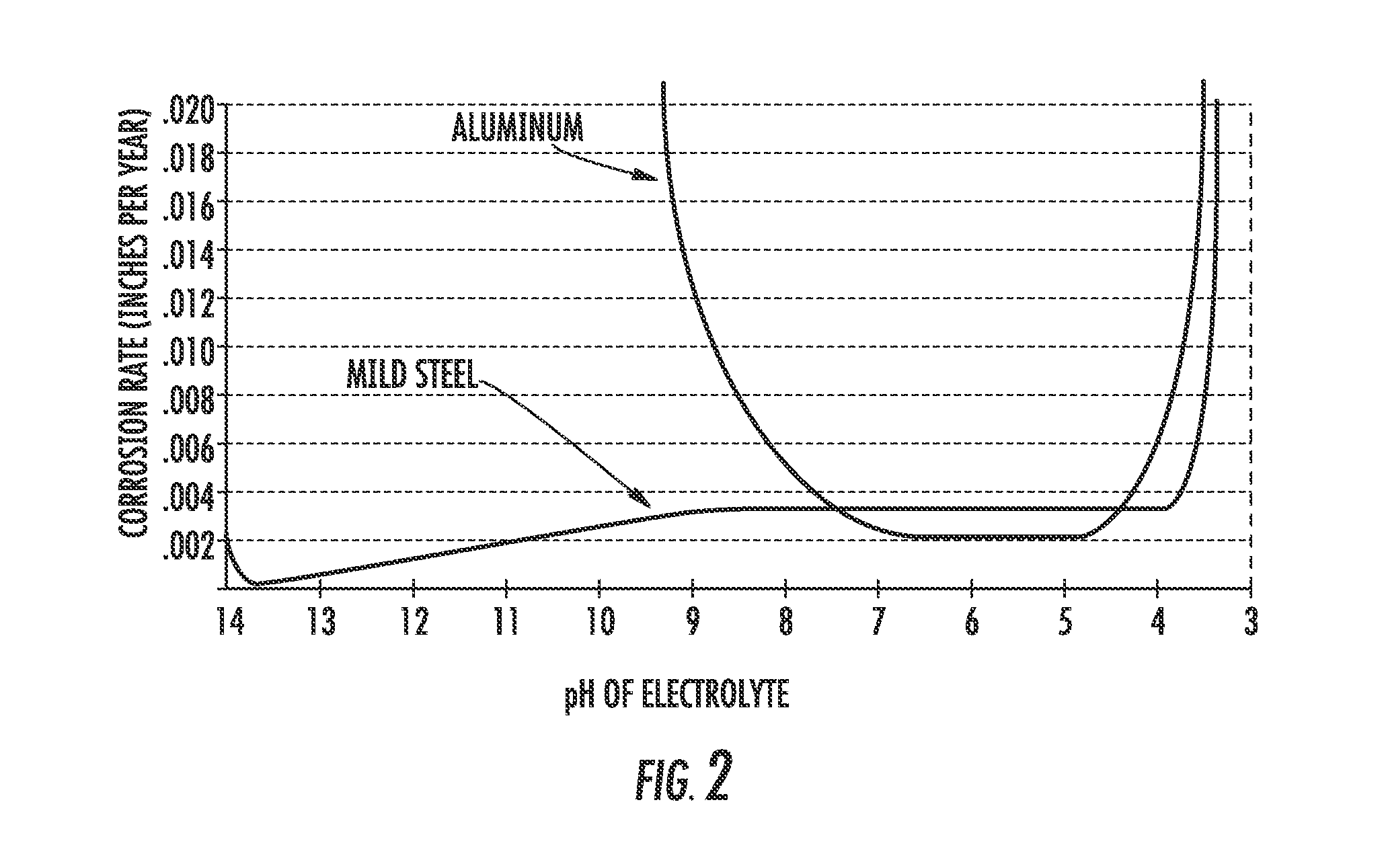Apparatus and method for assessing subgrade corrosion
a technology of subgrade corrosion and apparatus, applied in weather/light/corrosion resistance, liquid/fluent solid measurement, instruments, etc., can solve the problems of inability to properly prevent collapse, large amount of time spent documenting inspection crews, and many of these structures have become unstable, so as to eliminate excessive labor and equipment costs
- Summary
- Abstract
- Description
- Claims
- Application Information
AI Technical Summary
Benefits of technology
Problems solved by technology
Method used
Image
Examples
Embodiment Construction
[0046]Referring to the drawings, an apparatus in accordance with an embodiment of the invention is illustrated in FIGS. 4-6 and shown generally at reference numeral 10. The apparatus 10 includes a probe 11 and a controller 12 having a potentiostat 13 therein. The apparatus 10 is described in further detail below.
[0047]Quantifying the corrosion rate at a particular site is essential to understanding the progression of corrosion over time. The corrosion rate of a structure site will indicate if the soils are currently oxidizing or reducing by the severity of the corrosion level. If the corrosion rate is ½ mil or less per year we may consider the soil to be a reducing soil. Conversely, the corrosion rates can exceed those levels by a magnitude or more if there are strong depolarizers present in the soil or water.
[0048]Measurement of the redox level of the site will also provide some insight into the type of soil or condition of the soil at that point in time. Redox is an indication of ...
PUM
| Property | Measurement | Unit |
|---|---|---|
| depth | aaaaa | aaaaa |
| resistivity | aaaaa | aaaaa |
| corrosion rate | aaaaa | aaaaa |
Abstract
Description
Claims
Application Information
 Login to View More
Login to View More - R&D
- Intellectual Property
- Life Sciences
- Materials
- Tech Scout
- Unparalleled Data Quality
- Higher Quality Content
- 60% Fewer Hallucinations
Browse by: Latest US Patents, China's latest patents, Technical Efficacy Thesaurus, Application Domain, Technology Topic, Popular Technical Reports.
© 2025 PatSnap. All rights reserved.Legal|Privacy policy|Modern Slavery Act Transparency Statement|Sitemap|About US| Contact US: help@patsnap.com



